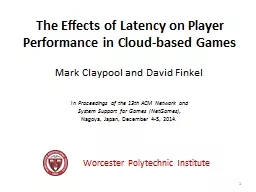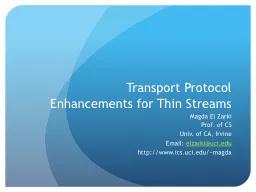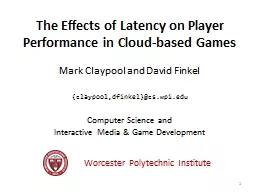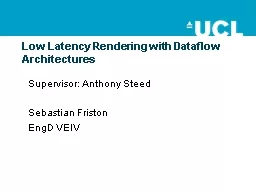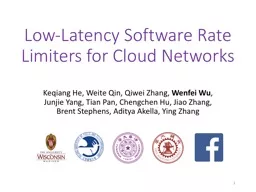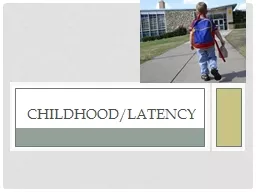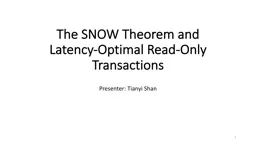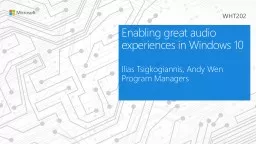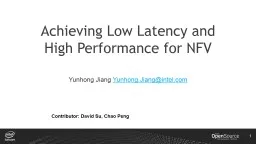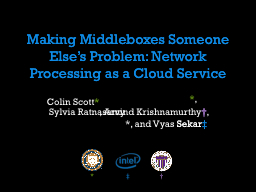PPT-The Effects of Latency on Player Performance in Cloud-based
Author : karlyn-bohler | Published Date : 2017-05-12
Mark Claypool and David Finkel Worcester Polytechnic Institute 1 In Proceedings of the 13th ACM Network and System Support for Games NetGames Nagoya Japan
Presentation Embed Code
Download Presentation
Download Presentation The PPT/PDF document "The Effects of Latency on Player Perform..." is the property of its rightful owner. Permission is granted to download and print the materials on this website for personal, non-commercial use only, and to display it on your personal computer provided you do not modify the materials and that you retain all copyright notices contained in the materials. By downloading content from our website, you accept the terms of this agreement.
The Effects of Latency on Player Performance in Cloud-based: Transcript
Download Rules Of Document
"The Effects of Latency on Player Performance in Cloud-based"The content belongs to its owner. You may download and print it for personal use, without modification, and keep all copyright notices. By downloading, you agree to these terms.
Related Documents

